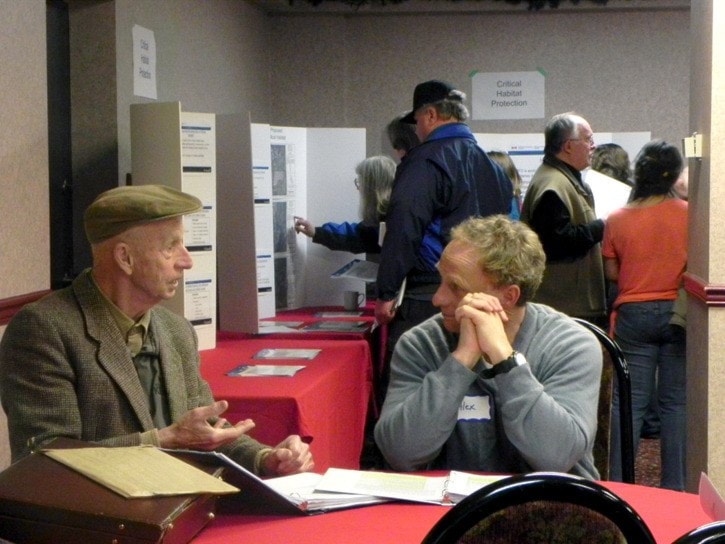DFO representatives were in Harrison Hot Springs on Tuesday night to discuss future practices in and along Agassiz and Harrison Hot Springs sloughs and ditches.
An open house was held at the Ramada (formerly the Executive Inn) and about a half dozen reps manned information stations about the Species at Risk Recovery Act. The act is in development stages, and DFO has been seeking input throughout the process.
The SARA outlines critical habitat for aquatic species, particularly the Salish Sucker and the Nooksack Dace. It also prohibits any activity that would harm that critical habitat. The Salish Sucker is currently endangered, and found in local sloughs.
Biologist Mike Pearson was on hand for the open house to discuss the Salish Sucker with attendees. The small fish lives in a handful of waterways in the Fraser Valley, including the Miami River, Mountain Slough and Agassiz slough, but in small numbers.
Pearson has been studying the fish for several years, and said they started to tag them. The sloughs run through residential and agricultural areas throughout Harrison and Agassiz, and Tuesday night's meeting brought out a number of residents with different concerns.
Many council members from both communities took in the open house, along with local farmers and environmental advocates. They were asked to fill out surveys, take away information, and chat with the representatives available. Last January, DFO held a meeting in the same location, but with a presentation format, and question and answer period. While that meeting dealt with a recovery plan for the Salish Sucker, this meeting dealt with the action plan. Similar meetings have been held in neighbouring communities over the last week.
The role of a SARA order is to protect critical habitat. Once land is determined critical habitat, SARA requires that the critical habitat of an aquatic species be legally protected. When a SARA order is issued, it triggers Section 58 of the act, which prohibits destruction of the critical habitat. Destruction of critical habitat can result in charges under SARA.
Activities such as removing plants, building a bridge or a dam, or disposing of damaging materials in the stream would be prohibited.
For more information on SARA orders, visit www.pac.dfo-mpo.gc.ca/saraconsultations.
news@ahobserver.com
